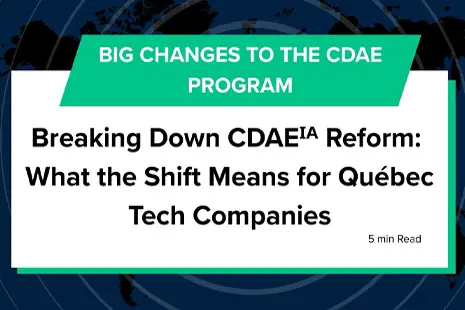With bank closures, rumblings of a recession and a race to the debt-ceiling in the United States, 2023 has been chock full of concerning news for venture capitalists and startup founders alike.
Zooming out, however, new industries and global funding initiatives have been having their moment over the past year, with investment trends showing legitimate momentum in areas like cleantech.
We’ll break down the good news, the bad news and how to make the best of all of it here.
First, the good: Canada, cleantech buck VC trends
Despite experiencing a year-over-year (and quarter-over-quarter) decline in total venture capital funding, recent figures from the Canadian Venture Capital and Private Equity Association (CVCA) are actually being seen as a ‘return to normalcy’ following pandemic-era highs.
Roughly $1.17 billion was invested across 153 deals in Q1 2023 in Canada, which brings deal values back to their Q2 2020 levels. While the total number of deals is still higher than the 2020 benchmark, the valuations demonstrate that investors are being more cautious about the totals they funnel into specific businesses—opposed to shunning investment altogether.
That’s what happened following similar market uncertainty in 2008, where Canada, the US and virtually all nations saw VC funding freeze. That’s simply not happening today, which should be viewed as a good sign for founders, especially in emerging industries where investment has never been hotter.
Cleantech and agriculture are seeing investments grow by leaps and bounds, thanks in no small part to an increase in government funding to support innovation in these sectors. While agriculture achieved its highest quarter investment valuation on record, cleantech deals lead private equity activity, garnering $883 million in investment in Q12023 and representing 45 percent of the quarter’s total investment value, according to CVCA estimates
“In Q1 we saw VC investors prioritizing higher quality companies and adopting a cautious approach,” said Kim Furlong, Chief Executive Officer, CVCA. ?“The current market conditions have prompted investors to stay the course, keeping companies private until values and public markets have rebounded. We anticipate an even greater interest in cleantech as the tax credit and rebate programs continue to stimulate growth and innovation in this sector.”
Next, the bad: Global VC funds are missing return targets
Despite the emergence of agriculture and cleantech as winning investment opportunities, recent findings from PitchBook show that returns for VC funds in the US were negative for the last three consecutive quarters of 2022.
This marked the first time in more than a decade—ie. Since markets crashed in 2008—that returns have been negative for this long of a stretch. It also comes as VCs start marking down their investments in tech startups whose values had ballooned during the pandemic, including communication technologies designed for remote work.
Additionally, the yearly internal rate of return—which is used to measure the profitability of venture funds on an annual basis— hit negative 7 percent in the third quarter of 2022, marking another decade-plus low that mirrors trends from the Great Recession.
What’s giving inventors hope, however, is that this all too seems indicative of a market correction as new arenas for investment (cleantech, agriculture and even artificial intelligence) offer VCs more stable long-term growth opportunities than many pandemic-era tech trends.
“Too much capital flooded into the ecosystem in venture capital, in particular in the time period between 2015 and 2021,” Max Gazor, a general partner at VC firm CRV, told the Wall Street Journal. It’s a scenario that caused venture firms to “bid excessively high prices” to win competitive deals that may now look overvalued, Grazor explained.
Going forward? More market corrections, and more opportunities
While there are many ways to slice and dice the numbers, the long-story-short of the current market is that the doors are closing on pandemic-era investments while VCs look toward all-new industries (with major long-term potential) for growth.
What this means for founders is that they’re likely still facing an uphill battle when it comes to securing VC funding thanks both to larger market uncertainties—see those bank closures and debt-ceiling discussions—and tighter purse strings all around.
Going forward, founders are wise to explore multiple avenues for funding to extend their businesses runway, tapping into not just private equity but some of the many government-backed funding programs offered in both the US and Canada.
To that end, investors are still looking for capital efficiency especially as companies find their product market fit. The growth-at-all-costs era, however, is definitely in the rear view mirror.
To learn more about how to map a funding roadmap that works for your business, watch our recent webinar Building your R&D Capital Strategy and schedule a call with Boast AI today.


